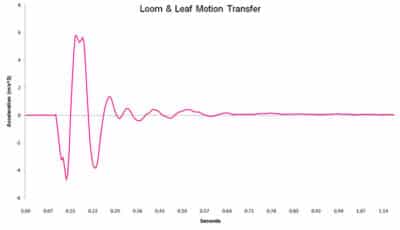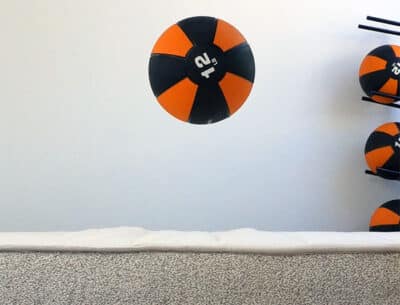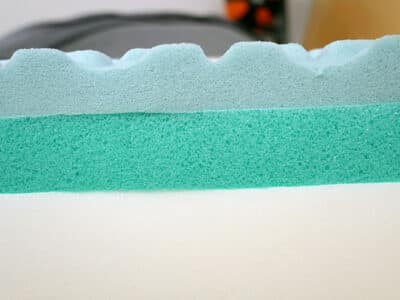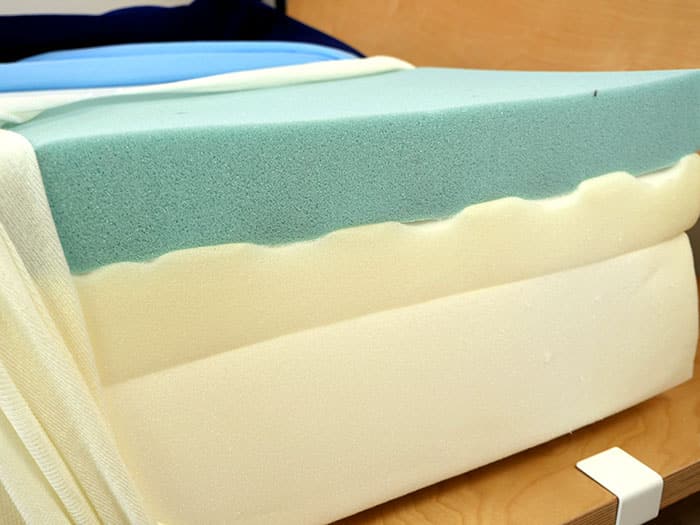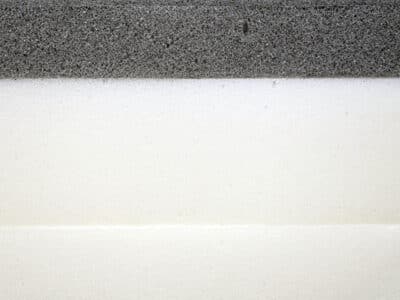
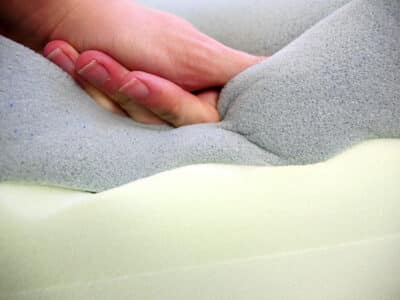
Foam
Best For
- Balanced feel
- Less dramatic hug
- Better for sex—more bounce and often better edge support
Considerations
- Higher levels of motion transfer
- Limited contour
Memory Foam
Best For
- Deeper hug and contour
- Lower levels of bounce and less motion transfer
- Great pressure relief
Considerations
- Possible heat retention
- Poorer edge support
Summary
Foam vs. memory foam—how do you tell them apart? Which one is right for you? It can be hard to know the answer.
Poly foam is known for its balanced feel and good cooling performance, compared to memory foam. While memory foam has deeper hug, contour, and a denser feel.
If you like sinking into your mattress or feeling that hug, memory foam is a great option. If you want to avoid the possibility of that “stuck” feeling, poly foam could be the better pick for you.
At the end of the day, mattress performance comes down to quality and composition more than just the name or foam type.
In This Comparison
Best Models | Comparison | Foam | Memory Foam | Summary | FAQ
Best Foam Mattresses
| Mattress | Score | Read Review | Check Price |
|---|---|---|---|
| Douglas | 9.73 | Read Review | Check Price |
| Zoma | 9.62 | Read Review | Check Price |
| Plank | 9.61 | Read Review | Check Price |
| Nest Bedding Quail | 9.59 | Read Review | Check Price |
| Leesa Original | 9.56 | Read Review | Check Price |
Best Memory Foam Mattresses
| Mattress | Score | Read Review | Check Price |
|---|---|---|---|
| Amerisleep AS3 Foam | 9.64 | Read Review | Check Price |
| Novosbed | 9.64 | Read Review | Check Price |
| BedInABox | 9.62 | Read Review | Check Price |
| BedInABox Eco-Lux | 9.57 | Read Review | Check Price |
| Loom & Leaf | 9.56 | Read Review | Check Price |
Foam vs. Memory Foam: Which is Best?
We conduct data-driven and objective tests for every mattress we review (see how we test here). Each mattress has 33 individual data points that are recorded and analyzed.
The comparison chart below looks at the average performance for each category based on the three types of foam we have tested to date.
While this comparison is mainly foam vs. memory foam, we’ve added in some data on latex foam to see how it is vastly difference in terms of performance.
| Factor | Foam | Memory Foam | Latex Foam |
|---|---|---|---|
| Cooling (score) | 9.36 | 9.30 | 9.60 |
| Sinkage (inches) | 2.04″ | 2.17″ | 2.28″ |
| Motion Transfer (m/s2) | 5.74 | 4.04 | 8.23 |
| Response (seconds) | 0.34 | 0.63 | 0.36 |
| Bounce (inches) | 8.40″ | 6.19″ | 11.04″ |
| Edge Support (inches) | 4.82″ | 5.21″ | 4.35″ |
| Sex (score) | 9.43 | 9.15 | 9.59 |
| Pressure Relief (score) | 9.36 | 9.48 | 9.50 |
| Off-gassing (days) | 3.11 | 3.08 | 3.80 |
Based on the results of our tests, we can make the following generalizations about these various foam types.
Memory foam is typically warmer than other foams.
Because of the way memory foam allows deeper hug and contour, that can also mean sleepers may feel some level of heat retention.
As you can see in the image below, more contour allows you to engage with deeper levels of foam.
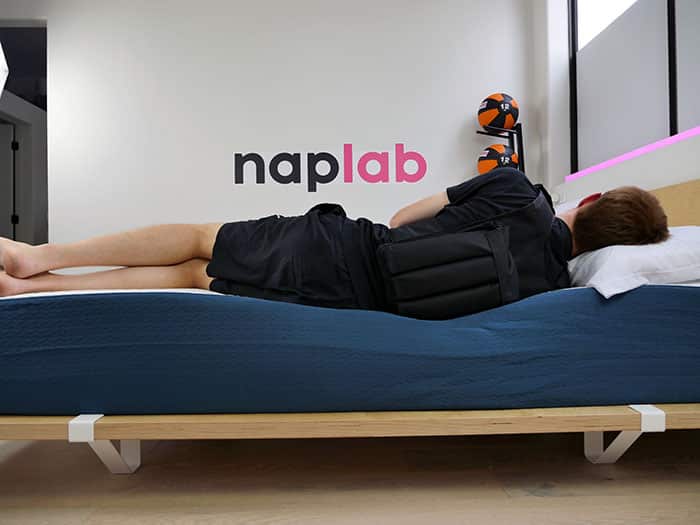
While this can be good for pressure relief, it can also be detrimental to cooling performance. Where there are deeper layers, it is more difficult for heat to escape.
Poly foams or latex foams have less contour and the properties of their composition limit heat dissipation and sleepers generally sleep cooler.
Memory foam has less motion transfer.
Motion transfer can be a real problem for sleepers who toss and turn or those who are easily disturbed. In the charts below, you can see a side-by-side comparison of foam vs. memory foam.
Poly Foam
Memory Foam
On the foam mattress, in this case, the Emma, the mattress experienced over 40% more impact from the bounce than the memory foam (5.57 m/s²). Total motion transfer levels were 10.50 m/s² and motion continued for 0.7 seconds.
With the Loom & Leaf, the initial energy drop is much less (3.19 m/s²) and it continues for about the same length of time, 0.7 seconds. But overall the total motion transfer (5.02m/s²) was 50% less than the Emma mattress.
Memory foam has a slower response time.
One of the benefits of a standard poly foam or a natural latex foam is that the response time is generally faster.
Check out this video of the response time on the Nectar memory foam mattress.
It took 3.0 seconds to be mostly recovered a full 5.0 seconds before it was full recovered. This is one of the slowest response times we’ve tested to date.
For comparison, here is a video of the response time on the Douglas poly foam mattress.
This mattress was mostly recovered by 0.3 seconds and fully recovered by 0.7 seconds.
Latex foam has the most bounce.
If you’re looking for higher levels of bounce, latex foam is going to be your best bet. Latex foam mattresses we’ve tested to date have an average 11.04″ of bounce.
Poly foam has an average max bounce of 8.40″ and memory foam has the least amount of bounce at only 6.19″.
You can see this trend in the bounce test images below as well.
- Poly Foam: moderate bounce
- Memory Foam: low bounce
- Latex Foam: high bounce
Foam Bounce
Memory Foam Bounce
Latex Foam Bounce
Bounce is a bit of a preferential factor, neither good nor bad. If you like less bounce and want a mattress that can really absorb energy, memory foam is a solid pick.
Memory foam has worse edge support.
Edge support is not really a category where memory foam shines in terms of peak performance. Memory foam is known for deeper compression, hug, and contour, which also can mean additional sinkage at the edge.
Poly Foam
Memory Foam
The average sinkage when sitting directly on the edge of a memory foam mattress is 5.21″. Compared to latex foam, this is nearly 1″ deeper (max of 4.35″). And compared to a standard foam mattress, the max is only 4.82″.
While there are some exceptions where memory foam can offer exceptional edge support (ie: BedInABox Eco-Lux) the general consensus is that memory foam struggles in this area.
Memory foam is not ideal for sex.
Because of the lower bounce levels, some memory foam may not be ideal for sex performance.
What factors are most important for good sex? While it’s not an exact science, we have identified the most important factors to be:
- Bounce
- Edge support
- Noise
- Pressure Relief
- Cooling
Concerning memory foam, both bounce and edge support struggle a little, which can lead to poorer sex performance.
Latex foam or a mattress blended with poly foam should yield better performance in this area.
What is a foam mattress?
A foam mattress is any mattress where the majority of layers are made up of various types of foam, typically a blend of poly foam, and may sometimes include layers of memory foam as well.
Types of Foam
There are three main types of foam that are used in mattresses—poly foam, memory foam, and latex foam.
Poly Foam: Poly foam is the shortened name for polyurethane foams. Poly foam offers a faster response time and is oftentimes stacked with other foams to balance out the feel.
Support foam is another type of poly foam, although it’s harder / firmer than comfort poly foam.
Memory foam: All memory foam is poly foam. But not all poly foam is memory foam. Memory foam is a type of polyurethane foam that is characterized by its viscoelastic properties. Memory foam usually has a denser feel, deeper hug, and slower response.
Latex Foam: Latex foam is foam derived from the natural sap of a latex tree and can be classified by two names—Dunlop latex or Talalay latex. Latex tree sap is processed and manufactured to become a usable foam for mattresses. Latex foam is oftentimes perforated for better performance and is known for its exceptional cooling and fast response time.
Among these three types, a mattress can use one or more of these foams in the same mattress.
Foam Design
In addition to the foam type, the design of the foam can also change the feel or performance as well.
Three of the most popular foam designs we see today include:
- Open Cell Foam: This foam is created when an inflating agent is added to the foam during its creation. This additive allows air to fill the gaps where the foam was originally, creating a lighter foam that is more breathable and more responsive as well.
- Convoluted Foam: With convoluted foam, the shape of the foam has a wave or egg-crate-like pattern on one side, which allows air to pass through more easily.
- Perforated Foam: This foam has two flat sides, unlike convoluted foam, but the surface of the foam has been perforated with hundreds of holes that span through the top and bottom. These holes are also for better airflow and faster response.
Do you see the trend here? All of these design strategies are intended to make a foam that is lighter, cooler, and with a faster response time. The can be especially beneficial when added to memory foam.
What does a foam mattress feel like?
The feel of a foam mattress varies depending on what type of foam is used.
- Poly foam tends to have a faster response time and gives off a very balanced feel.
- Memory foam has the deepest contour and hug among all foam types.
- Latex foam feels bouncier and may have more pushback than memory or poly foam.
Advantages of a Foam Mattress
#1. Balanced Feel
A traditional foam mattress is going to have a much more balanced feel compared to a memory foam or latex foam mattress. It generally has less sinkage as well.
#2. Faster Response Time
Poly foam also has a faster response time, especially compared to memory foam.
Poly Foam
Memory Foam
The comparison above shows a side-by-side look at the Douglas (poly foam) and Nectar (memory foam) mattresses.
Disadvantages of A Foam Mattress
#1. More Motion Transfer
One of the biggest disadvantages of a foam mattress is the higher levels of motion transfer. With less sinkage and faster response, that energy has to go somewhere.
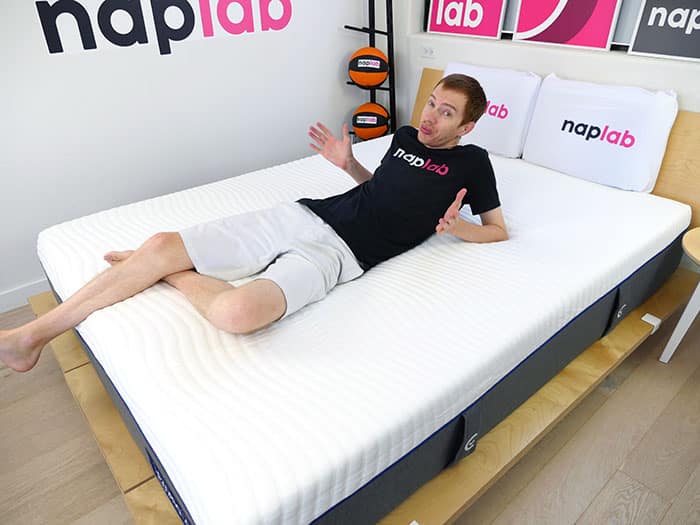
Instead of being absorbed into the foam layers, like traditional memory foam, this energy is spread across the surface of the mattress as motion transfer, which may disturb some sleepers.
#2. Variable Performance
The bottom line is that the term “foam mattress” covers a very broad spectrum of mattresses. And the quality of the foam has a huge impact on the overall performance.
For example, a low-quality poly foam may have a slower response than a luxury, modern memory foam.
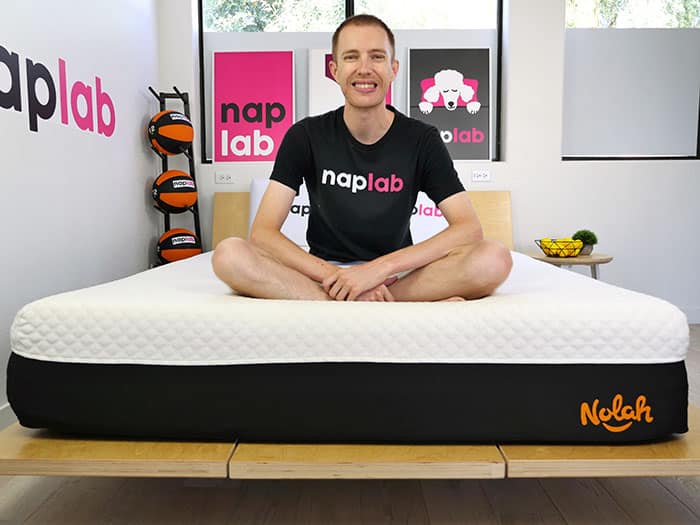
Also, foam mattresses include mostly poly foams, but may also include layers of memory foam or latex foam as well. Adding other types of foam to a mattress can change the feel, firmness, and performance of the mattress.
Because of these variables, it can be tricky to sum up the properties of all poly foams across the board.
What is a memory foam mattress?
A memory foam mattress uses memory foam as the primary comfort layer, with support layers below.
Memory foam mattresses can still include poly foams to some degree. That being said, the feeling when you sit or lie on a memory foam mattress will still be marked by deeper hug and contour.
What is memory foam?
Memory foam is a type of polyurethane foam. It is typically denser than traditional poly foam and tends to retain its shape longer when people sit or lie on it.
In a technical terms, memory foam is viscoelastic polyurethane foam. Viscoelastic refers to foams the ability of the foam to stretch around the curves of a sleeper, yet still bounce back to its original shape when the sleeper gets up.
What does memory foam feel like?
Memory foam has a good amount of stretch and elasticity to it, but it is also slow moving. We’ve all felt it before.
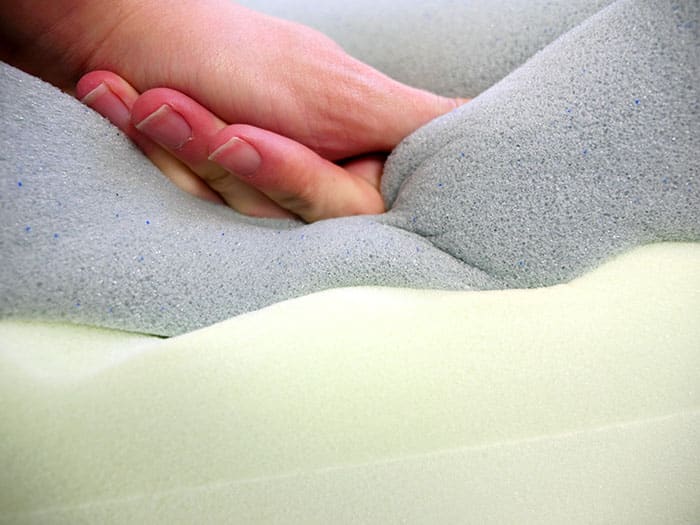
If you press your hand into the center of a classic memory foam, the foam will allow for deeper contour and sinkage the more you press into the foam.
And what happens when you take your hand off? The imprint remains usually for a few seconds. This is the mark of traditional memory foam.
Advantages of Memory Foam
#1. Deeper Hug
When lying on a memory foam mattress, you can feel how the foam conforms around the curves of your body. This kind of shape-mirroring helps avoid pressure points and improves pressure relief overall.
Check the image below of the side contour on the Loom & Leaf mattress.

#2. Minimal Motion Transfer
Being that memory foam is a denser foam than most other poly foams, that has the advantage of less motion transfer.
When motion is felt on the surface of the mattress, memory foam is able to absorb that energy and dissipate it quickly within the foam.
The motion transfer chart below those this happening on the Loom & Leaf.
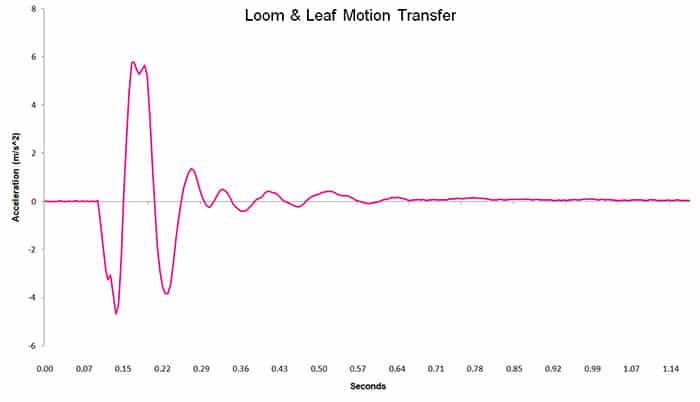
For comparison, check out the same motion transfer test on a Leesa mattress, which uses both poly foam and memory foam.

Disadvantages of Memory Foam
#1. Heat Retention
Heat retention can be one of the biggest problems on memory foam. Because of the density, there’s just not a lot of space for the warm air to go.
Deeper contour and sinkage means that heat can get trapped in those core layers of the mattress.

To offset the heat, memory foam does have a few tricks it can use. There are special additives that when mixed with memory foam during manufacturing allow for the foam to perform better than it usually would.
- Graphite Foam: infused with graphite for lower density and higher thermal diffusivity
- Gel Foam: infused with gel, which improves cooling performance and absorbs heat
- Copper Foam: infused with copper for an antimicrobial finish with high levels of heat conductivity
#2. Poorer Edge Support
Edge support is the second area where memory foam sometimes struggles. This foam is known for its compression and contours.

When lying, compression can be good for pressure relief, but for sitting on the edge of the mattress, compression may cause the mattress to feel unsupportive.
All that to say, not all memory foam struggles in this area. With some intentional design and forethought, many memory foam mattresses are able to still provide great edge support.
For example, the organic BedInABox EcoLux, the Ghostbed Luxe, or the Novosbed mattress all had excellent edge performance with scores in the mid to upper 9’s.
Which is right for you?
So you’ve made it this far… how do you know which mattress is right for you?
Foam mattresses are better if you’re looking for:
- Better cooling
- Faster response time
- Better edge support
- Better sex
Memory foam mattresses are better if you’re looking for:
- More hug and contour
- Less bounce
- Minimal noise
- Less motion transfer
FAQ
Depending on what you’re looking for, each mattress has distinct advantages and disadvantages. For contour and hug, go with memory foam. For response and a balanced feel go with poly foam. For bounce and natural materials, go with latex foam.
Generally, foam mattresses can be expected to last 10-15 years. A spring mattress lasts 7-10 years. And a hybrid would be somewhere in the middle—10-12 years. All that being said, the exact lifespan of any mattress depends on who is sleeping on it and other environmental factors.
Poly foam is a shortened way to say polyurethane foam. Poly foam is made when petroleum chemicals are combined with a blowing agent that causes the liquid to foam.
Memory foam is a type of polyurethane foam known for its viscoelasticity and the ability to have a “memory” of shapes imprinted on the foam. For example, when you press your hand into memory foam and then remove it, the shape (or memory) of your hand remains on the foam for a few extra seconds.


